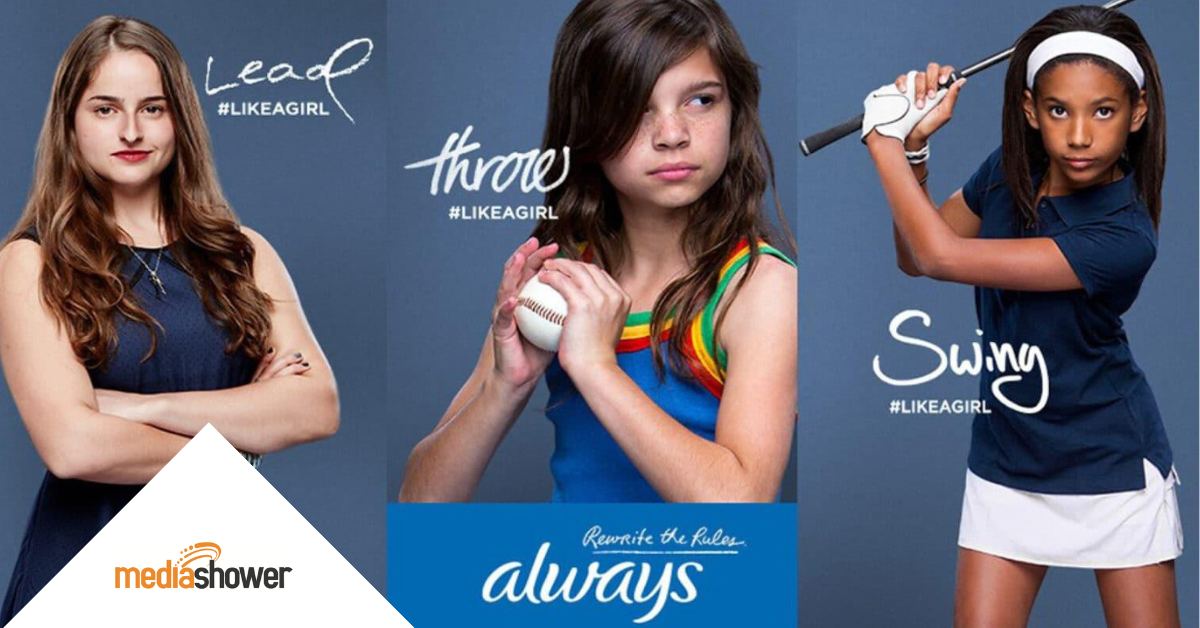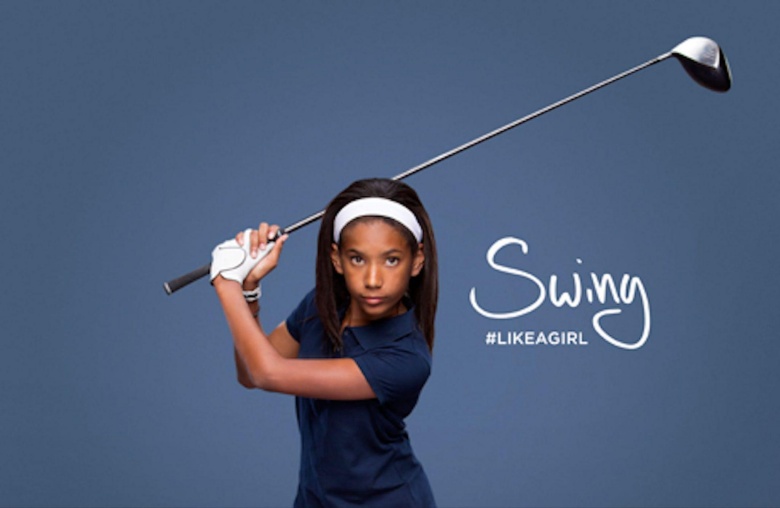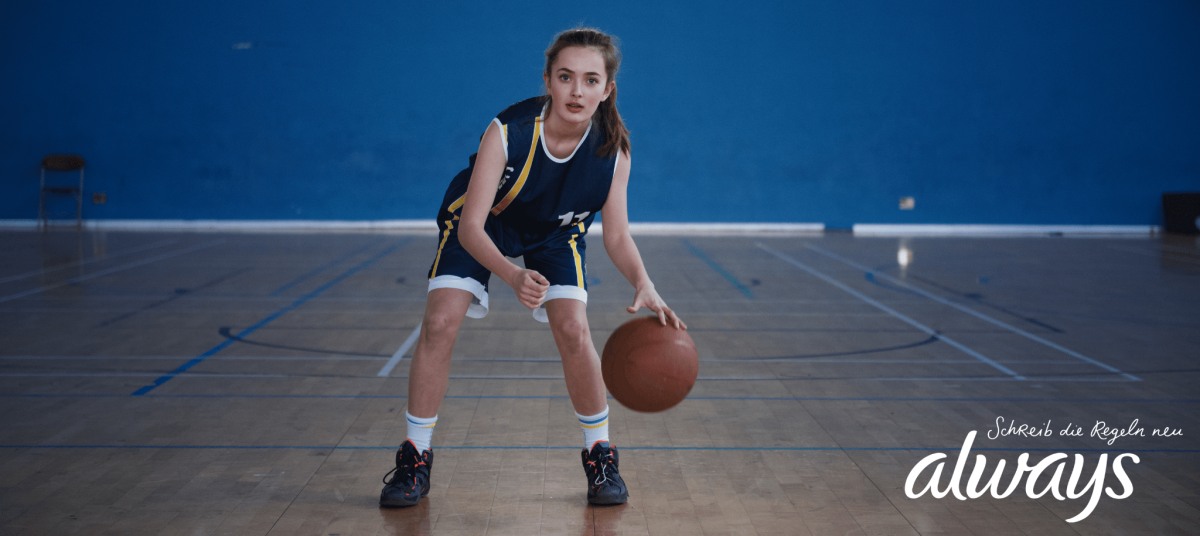
Unfortunately, doing something “like a girl” has been an insult for a long time.
“You throw like a girl.”
“You run like a girl.”
And, paired with the difficulties of growing up, it can weigh on young women in ways we may not realize.
In 2014, feminine products company Always launched an awareness campaign across TV and social media, busting these stereotypes across social media using the hashtag #LikeAGirl.
In these ads, young women athletes were presented to show how all these activities, and more, were exactly what a girl would do. And in doing so, they aligned the Always brand with their core market in an open, supportive, and empowering way.
Depicting, Then Busting, The Stereotype
The primary video for this campaign opens with young men and women being brought onto a soundstage and asked to perform various actions “like a girl.” These actions are typically awkward, flamboyant, insecure: in other words, stereotypically “feminine.”
This is familiar territory for filmmaker Lauren Greenfield. By 2014, she’d made several successful documentaries and photographic records of young women on topics like money and eating disorders. Now, she helmed a campaign for Always to ask what it really means to do something “Like a Girl.”
The responses to her questions range from ambivalent, saying they’re not sure if it’s a good or bad thing, and one of the older girls noting that it’s a blow to her self-confidence. One of the boys in the video is asked if what he did is an insult to his sister, which he emphatically denies before considering it and saying that maybe, by mistake, he did.
A title card comes up, stating plainly that a young woman’s self-reported confidence plummets during puberty.
The video then shifts to a montage of female athletes showing off their skills, from martial arts to volleyball, overlaid with a subject making the point that they do things “like a girl” because they are one. Raising the tone with upbeat music, the video ends on a high note with a list of next steps.
Always broke stereotypes about its industry as well with this campaign–which was not unlike the brand. For those of us who don’t remember, they were also famous for using commercials featuring pads splashed with blue water to show absorbency. Their frankness around women’s issues was necessary and refreshing, and this ad campaign continued that trend.
Juxtaposing Stereotypes vs. Reality
Although #LikeaGirl was a massive brand campaign spanning many media channels, the video is perhaps the most famous part.
The video uses a montage, opening with subjects primarily in middle grades, between 10 and 12, being interviewed. They’re not prompted or cued; they’re asked simple questions and allowed to speak freely.
This is carefully structured, so that the contrast is evident as you see older girls showing off their extensively trained skills. Nobody in the video is recognizable as a professional athlete, yet they know what they’re doing.
This juxtaposition connects the brand to their intended audience by showing that the female body doesn’t conform to stereotypes. By juxtaposing those two ideas, the audience understands that all these bodies need the products that Always offers. In many ways, it is a great equalizer that draws the audience in through recognition and identification.
Using Different Channels to Reach Different Audiences


The #LikeAGirl campaign began on social media, before shifting toward a more formal ad campaign. The difference is extremely powerful. In the social banners, we see something akin to a magazine ad: a single image showing a young girl playing a sport or standing proud. These images resonate in a way that doesn’t call for video or motion.
However, social media was still integral, as you can see at the end of the video. Without the ability to connect movement, voice, action, and linear storytelling, we also miss out on the more profound message of the campaign–one that is important to Always and their audience alike.
Marketers talk a lot about omnichannel marketing, and in some cases, this is used as a stand-in for running ads on different platforms. But truly leveraging different media and platforms unlocks new ways to engage with audiences. This, in turn, provides a much more persuasive “oomph,” in terms of emotional effectiveness or even simple recognition.
What stands out about these ads is they’re both optimistic and immediate. As the video inspired young women, they could act on it right away by retweeting #LikeaGirl.
Always kept up that momentum by releasing a series of videos, including presentations by respected authors such as Rachel Simmons, short films created by young girls, profiles of female athletes, and even charity work with organizations like UNESCO.
Connecting With a Core Audience
The #LikeAGirl campaign continued until 2018, with a sequel video showing girls smashing whiteboards with their supposed limitations written on them. There was also a campaign to add more female emojis to the ones available on phones, and another focused on encouraging girls to stick with sports instead of dropping out early in high school.
Throughout, the campaign stuck to its tenets of honesty and acceptance. And it still serves as an excellent reminder to think about what we say and how we say it, a core lesson for any communicator.
Some additional lessons for communicators from the #LikeAGirl campaign include:
- Show, don’t tell. Demonstrate the effects of the behavior or words you highlight in your communications.
- Use contrast to help your audience see the difference between positive and negative approaches to a topic.
- Mix personal anecdotes with data that reflects larger trends to make your point.
- Give your audience an immediate, positive step they can take, such as a social media hashtag, that can help raise awareness and drive the conversation.
At Media Shower, we’ve helped over 500 companies produce over 100,000 marketing messages that land with their intended audience. Click for a free trial and make Better. Content. Faster.
